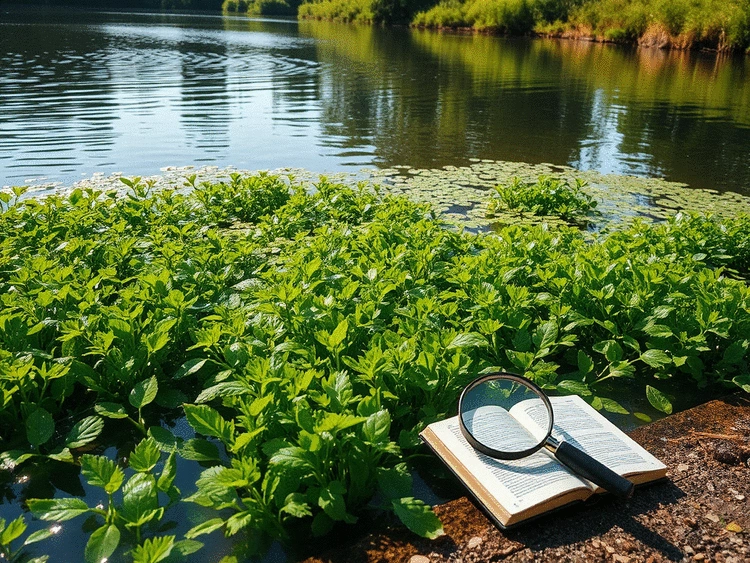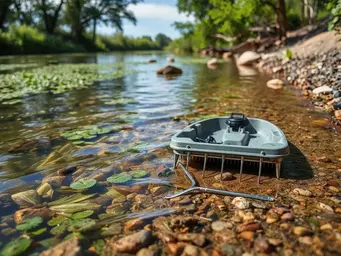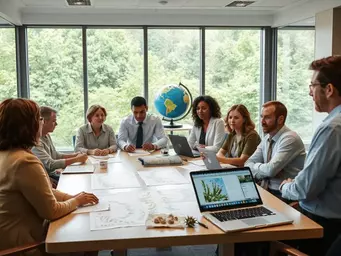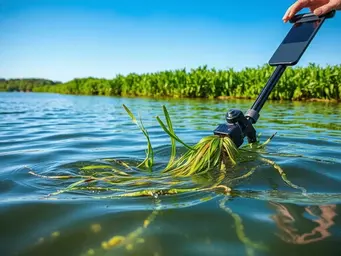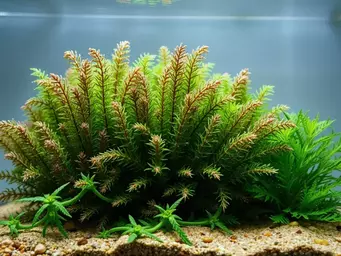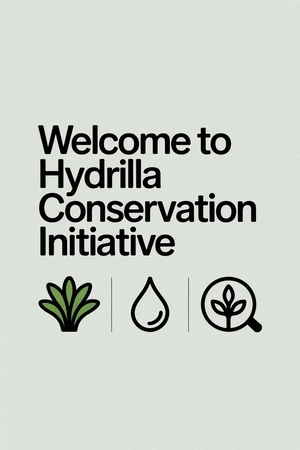In the ever-evolving battle against invasive species, hydrilla stands out as a formidable challenge. This aquatic plant, while seemingly innocuous, has the potential to disrupt entire ecosystems. But what if knowing a few key details could equip you to fight back? Let’s delve into the critical insights that can empower your conservation efforts.
What You Will Learn
- Ecological Impact: Hydrilla's rapid growth outcompetes native species, threatening biodiversity and water quality.
- Identification Features: Look for whorled leaves in groups of five to seven, slender stems, and distinctive tubers for accurate identification.
- Essential Tools: Utilize rakes, microscopes, and field guides to enhance your identification and management efforts.
- Community Involvement: Engage local citizens through training workshops and volunteer monitoring to create a proactive network against hydrilla.
- Legal Awareness: Understand local regulations surrounding hydrilla management to ensure compliance and effective reporting.
- Control Strategies: Implement a combination of mechanical, chemical, and biological control methods for effective management of hydrilla infestations.
Hydrilla Management: Identification, Tools, and Control Methods
This visual outlines the key aspects of managing Hydrilla, an invasive aquatic plant, covering its identification features, essential tools for fieldwork, and various control methods to safeguard aquatic ecosystems.
Key Identification Features
- Leaves: Whorled in groups of 5-7, serrated edges.
- Stems: Slender, several meters long, often branching.
- Tubers: Small, potato-like structures in sediment.
Distinguish from similar species like Elodea.
Essential Identification Tools
- Rakes: For gentle sample collection.
- Microscopes: For examining fine details.
- Field Guides: Illustrated differentiation.
Enhance accuracy and effectiveness in the field.
Hydrilla Control Methods
- Mechanical Removal: Raking or cutting biomass.
- Chemical Treatments: Judicious herbicide use.
- Biological Control: Natural predators/competitors.
Often requires a combination of strategies.
Technology for Mapping & Monitoring
- GPS Mapping: Documenting infestation locations.
- Remote Sensing: Assessing large areas quickly.
- Data Analysis: Informing targeted action plans.
Crucial for effective management strategies.
Understanding Hydrilla: An Overview of Its Impact and Identification
In the world of aquatic ecosystems, hydrilla can be a formidable opponent. This invasive species poses a significant risk to native plants and animal habitats within our waterways. With its rapid growth and ability to thrive in various conditions, hydrilla can outcompete local flora, leading to reduced biodiversity and compromised water quality. It’s crucial for environmental professionals and educators to understand hydrilla and its impacts during their conservation efforts.
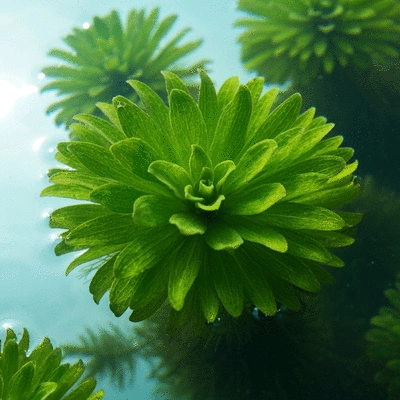
Have you ever encountered hydrilla during your work in environmental management? Its lush green foliage might seem appealing at first glance, but don’t let that fool you. Understanding the ecological consequences of hydrilla is essential for anyone dedicated to preserving our precious wetlands.
What is Hydrilla and Why is It a Concern?
Hydrilla (Hydrilla verticillata) is an aquatic plant originally from Africa and Asia, now prevalent in many parts of the United States. Its ability to grow rapidly and form dense mats on the water surface creates a host of challenges. These mats can block sunlight from reaching other aquatic plants, disrupting the entire ecosystem. Furthermore, hydrilla can hinder recreational activities such as fishing and boating, leading to economic impacts on local communities. Early detection is vital for effective management, as detailed in best practices for aquatic invasive species surveillance by the Great Lakes Commission.
- Rapid Growth: Hydrilla can grow up to a foot per week in ideal conditions!
- Dense Mats: Its growth forms thick mats that prevent light penetration.
- Reduced Biodiversity: Native species struggle to survive when outcompeted by hydrilla.
Understanding these factors highlights why hydrilla should be a primary concern for anyone involved in aquatic conservation efforts. Its presence can dramatically alter the dynamics of local ecosystems, making awareness and early identification crucial.
Key Features to Identify Hydrilla
Identifying hydrilla accurately is vital, as it can easily be mistaken for other aquatic plants like Elodea. One of the key traits of hydrilla is its whorled leaf arrangement—typically in groups of five to seven. These distinctive leaves are often submerged, making them less noticeable but critical for identification. The Rhode Island Department of Environmental Management offers comprehensive resources on hydrilla identification and control.
- Leaves: Whorled in groups of five to seven, with serrated edges.
- Stems: Slender and can grow several meters long, often branching.
- Tubers: These are small, potato-like structures found in the sediment that allow hydrilla to regenerate.
Familiarizing yourself with these characteristics will significantly aid in identifying hydrilla in the field. Remember, accurate identification is the first step in effective management!
Essential Tools for Identifying Hydrilla
Gathering the Right Identification Tools
Before you head out to identify hydrilla, it’s essential to have the right tools in your arsenal. Having the appropriate equipment not only enhances your identification skills but also improves the accuracy of your findings. Here’s a list of necessary tools that I find invaluable:
- Rakes: Useful for collecting plant samples from the water.
- Microscopes: To examine fine details, such as leaf serration and tuber structures.
- Field Guides: Illustrated guides to help differentiate between hydrilla and similar species.
These tools are fundamental for anyone serious about aquatic plant management. With them, you'll be better prepared to tackle the challenges posed by hydrilla.
Understanding the Functionality of Each Tool
Each tool plays a crucial role in the identification process. For instance, rakes are essential for collecting samples without disturbing the surrounding ecosystem too much. Once you have your samples, a microscope will help you inspect the finer details necessary for distinguishing hydrilla from other plants.
- Rakes: Ideal for gentle collection and reducing sediment disturbance.
- Microscopes: Allow for close examination of leaves and tubers, confirming hydrilla’s presence.
- Field Guides: Provide essential illustrations that enhance identification accuracy.
These tools, when used correctly, can empower you to make informed decisions about hydrilla management in your local ecosystems.
Utilizing GPS Technology and Remote Sensing for Hydrilla Mapping
In today's technology-driven world, leveraging GPS and remote sensing can significantly enhance our ability to monitor and manage hydrilla. GPS technology allows us to track the spread of hydrilla accurately, mapping its locations and extent over time. This data is essential for developing effective management strategies.
- GPS Mapping: Helps document the specific locations of hydrilla infestations.
- Remote Sensing: Aids in assessing large areas quickly, providing insights into hydrilla spread.
- Data Analysis: Supports the creation of targeted action plans based on infestation patterns.
By utilizing these advanced tools, you can play a pivotal role in safeguarding our waterways from the threats posed by hydrilla. Are you ready to embrace technology in your conservation efforts?
Community Engagement Poll
How do you plan to contribute to the fight against hydrilla in your local waterways? Select one of the options below:
Taking Action Against Hydrilla Infestations
As an aquatic biologist, I've seen firsthand how community involvement can significantly impact the fight against hydrilla infestations. Community science initiatives allow local residents to participate in early detection and management efforts, which can lead to timely intervention. By mobilizing volunteers, we can monitor our waterways more effectively, ensuring that hydrilla doesn't take hold and disrupt our precious ecosystems! The Michigan Department of Environment, Great Lakes, and Energy emphasizes the importance of early detection of aquatic invasive species like hydrilla during summer months.
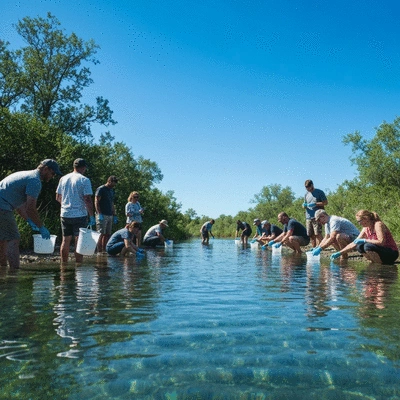
Understanding the Importance of Community Science
Community science empowers individuals to contribute to environmental monitoring, especially when it comes to invasive species like hydrilla. Engaging local citizens can enhance our collective ability to identify hydrilla early, which is critical for effective management. Here are a few ways community involvement plays a role:
- Training workshops: Hosting training sessions can equip community members with identification skills.
- Volunteer monitoring: Regular waterway checks by trained volunteers can help catch hydrilla before it spreads.
- Reporting platforms: Establishing user-friendly reporting systems encourages immediate action when hydrilla is spotted.
By fostering a spirit of collaboration, we can create a network of vigilant observers dedicated to protecting our waterways from hydrilla and other invasive species.
Legal Considerations and Reporting Procedures
Understanding the legal implications of identifying and reporting hydrilla is crucial for anyone involved in ecosystem management. Compliance with local regulations is not only important for effective management but also helps protect native habitats. Here’s what you need to keep in mind:
- Know the laws: Familiarize yourself with local and state regulations regarding invasive species management.
- Reporting requirements: Understand the specific procedures for reporting hydrilla sightings to the appropriate authorities.
- Documentation practices: Maintaining accurate records of your findings can assist in legal compliance and future management efforts.
By staying informed about legal requirements, you can ensure that your community’s actions contribute positively to the management of hydrilla.
Empowering Effective Management Strategies
Exploring Control Methods for Hydrilla
Once hydrilla has been identified, it's essential to explore various control methods. Different strategies may be more suitable depending on the scale of the infestation and the specific waterway in question. Here’s a brief overview of the most common control methods:
- Mechanical removal: Physical methods, such as raking or cutting, can reduce hydrilla biomass.
- Chemical treatments: Herbicides may be used judiciously to manage hydrilla populations, but caution is required to avoid harming native species.
- Biological control: Introducing natural predators or competitors can help manage hydrilla populations in a sustainable way.
Each of these methods has its strengths and weaknesses, and often a combination of them may be necessary for effective management.
Frequently Asked Questions About Hydrilla Management
1. What is Hydrilla and why is it considered an invasive species?
Hydrilla (Hydrilla verticillata) is an aquatic plant originating from Africa and Asia. It's considered invasive due to its rapid growth, ability to form dense mats on water surfaces, and its tendency to outcompete native aquatic plants, leading to reduced biodiversity and impaired water quality. These dense mats can also hinder recreational activities.
2. What are the key features to identify Hydrilla in the field?
Key identification features include leaves arranged in whorls of five to seven, serrated leaf edges, slender stems that can grow several meters long, and small, potato-like underground structures called tubers which allow the plant to regenerate.
3. What tools are essential for identifying Hydrilla?
Essential tools for identification include rakes for gentle sample collection, microscopes for examining fine details like leaf serration, and field guides with illustrations to help differentiate hydrilla from similar aquatic plant species like Elodea.
4. How can technology assist in Hydrilla mapping and monitoring?
GPS technology can be used to accurately map and document the specific locations and extent of hydrilla infestations. Remote sensing aids in quickly assessing large areas for spread, and data analysis helps in developing targeted action plans based on infestation patterns.
5. What are the main control methods for Hydrilla infestations?
Control methods include mechanical removal (raking or cutting), chemical treatments (judicious use of herbicides), and biological control (introducing natural predators or competitors). Often, a combination of these strategies is most effective for managing hydrilla populations.
Encouraging Responsible Reporting and Vigilance
Vigilance is key in the battle against hydrilla, and your role as a community member is critical! Reporting findings promptly and accurately can make a significant difference in controlling this invasive species. Here are a few ways to stay proactive:
- Regular checks: Conduct routine inspections of local waterways to identify potential hydrilla growth.
- Use reporting tools: Utilize apps or online platforms to report hydrilla sightings easily.
- Share information: Encourage friends and neighbors to stay informed about hydrilla and their identification skills.
By fostering a culture of vigilance, we can enhance the collective efforts to keep our waterways healthy and vibrant.
Best Practices for Invasive Plant Management
When it comes to managing hydrilla, following best practices is essential to promote aquatic biodiversity and ensure ecosystem health. Here are key strategies to consider:
- Integrated management: Combine mechanical, chemical, and biological control methods for holistic management.
- Monitoring and evaluation: Regularly assess the effectiveness of management efforts to adapt strategies as needed.
- Community engagement: Involve local stakeholders in management planning to foster ownership and sustainability.
Embracing these practices will not only help in managing hydrilla effectively but also contribute to the overall health of our aquatic ecosystems.
Conclusion and Invitation to Engage
As we work together to combat hydrilla infestations, I encourage you to utilize the tools and strategies discussed in this article. Share your experiences, connect with others in your community, and join local conservation efforts. Together, we can protect our waterways and promote a thriving ecosystem!
Recap of Key Points
Here is a quick recap of the important points discussed in the article:
- Understanding Hydrilla: An invasive aquatic plant that disrupts ecosystems by outcompeting native species and blocking sunlight.
- Identification Features: Look for whorled leaves in groups of five to seven, slender stems, and potato-like tubers.
- Essential Tools: Use rakes, microscopes, and field guides to enhance identification accuracy and effectiveness.
- Community Involvement: Engaging local citizens through training and volunteer monitoring enhances early detection and management.
- Control Methods: Employ mechanical, chemical, and biological strategies for effective hydrilla management.
- Legal Considerations: Familiarize yourself with local regulations and reporting procedures for invasive species.
- Best Practices: Integrate various management techniques, monitor effectiveness, and involve stakeholders for sustainable solutions.
